| 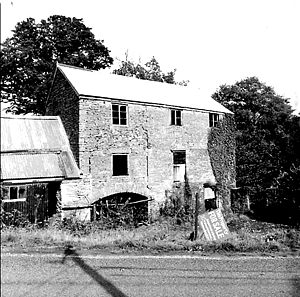
| | The mill for sale c.1983, after standing empty for over 30 years. | | | | 
| | The mill pool at the rear of the mill, showing the original headrace | |
| 
| | The mill seen from the Vowchurch road, with the old piggeries in the foreground. | | | | 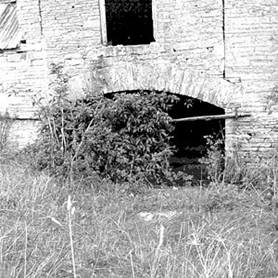
| | The building line shows that the extension and arch over the water wheel were added later to the original building. | |
| 
| | The front of the mill, showing the old cart shed to the left. This was a Blacksmith’s shop at one time. | | | | 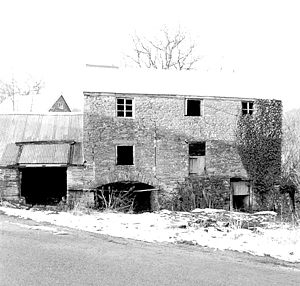
| | The front of the mill. The road is lower than today; carts could draw up under what is now the front door to load. | |
| 
| | Clearing out the mill ready for conversion. The old piggeries are in the background. | | | | 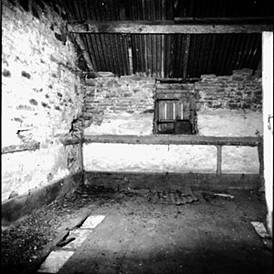
| | The bin floor before conversion. | |
| 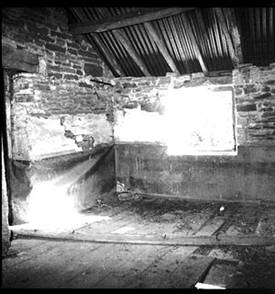
| | The store room off the bin floor, before conversion | | | | 
| | The store room off the stone floor before conversion, showing the original launder that brought the water to the wheel, which is below the floor here. | |
| 
| | The bin floor before conversion. A feed hopper from the millstone furniture is discarded in the foreground. The rails at the rear show the position of the original internal staircase | | | | 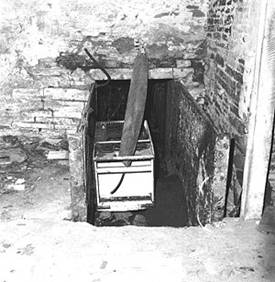
| | The original launder, full of junk. The penstock mechanism that allowed the miller to control the water is missing. | |
| 
| | The stone floor. The door on the right [now the front door of the house] is where grain was taken in and flour/ feed delivered out to the farmers’ wagons drawn up below. | | | | 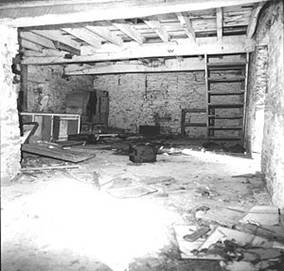
| | The stone floor, showing the original staircase up to the bin floor. The rails behind are for the stairs down to the spout floor [basement] | |
| 
| | The sides of the cast iron launder have been cut down to create space for a kitchen. The new pipe bringing water to the wheel can be seen. | | | | 
| | The original oak roof timbers of the mill are well preserved. The pulley for the sack hoist can be seen [top left]. A series of trapdoors would have been directly below. | |
| 
| | Construction starting on a new rear extension and conversion of the old cart shed. | | | | 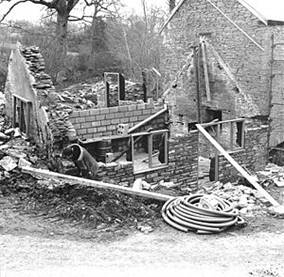
| | Conversion of the cart shed. The original and new roof lines can be seen. | |
| 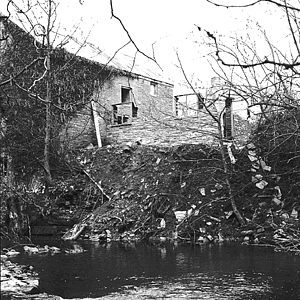
| | The rear extension taking shape above the Escley Brook. | | | | 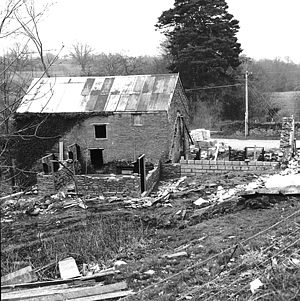
| | Building work at the rear of the mill. The mill pool has been filled in. | |
| 
| | Building a river wall to protect the foundations of the mill and the new extension from erosion. Ronnie Stewart is standing by the wall. | | | | 
| | The rear extension in progress, seen from the Escley Brook | |
| 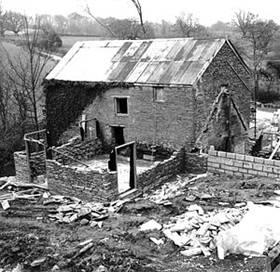
| | Building work at the rear of the mill. | | | | 
| | Inside the new rear extension. | |
| 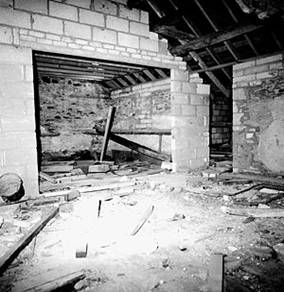
| | Building internal partition walls in the mill. | | | | 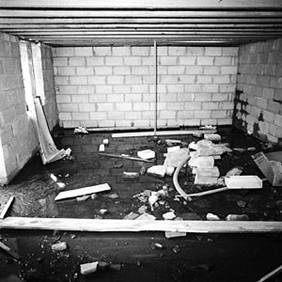
| | The ground floor of the old cart shed during conversion. | |
| 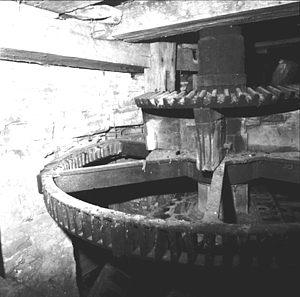
| | The mill machinery | | | | 
| | The hursting and surviving mill machinery | |
| 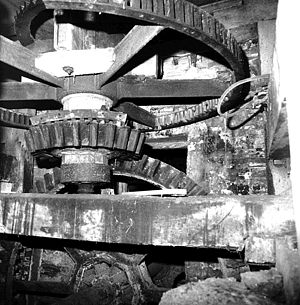
| | Pit wheel, wallower and great spur wheel. At the top left a piece of the spur wheel casting is missing. | | | | 
| | Pit wheel, wallower and great spur wheel. | |
| 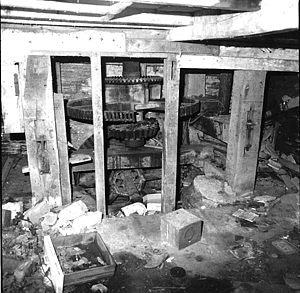
| | The surviving mill machinery. The floor and wheel pit are full of rubbish. | | | | 
| | The surviving mill machinery. The floor and wheel pit are full of rubbish | |
| 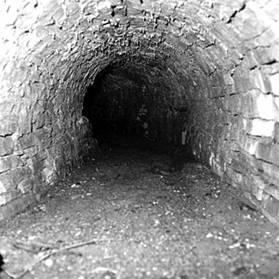
| | The outrace tunnel. This is over 6 feet high, and runs diagonally under the road to the Escley Brook downstream of the bridge. | | | | 
| | The mill wheel after 30 years without turning. | |
| 
| | The mill wheel fitted with some new steel buckets. | | | | 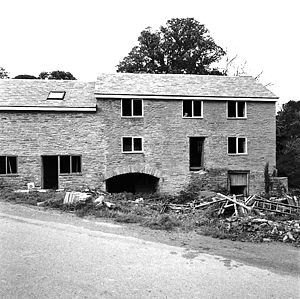
| | The conversion nearing completion. | |
| 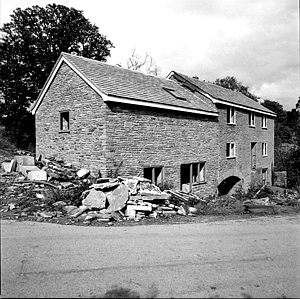
| | The conversion nearing completion. Upstairs front windows were subsequently added to the left-hand annex and the roof light removed. | | | |
| | | |





































